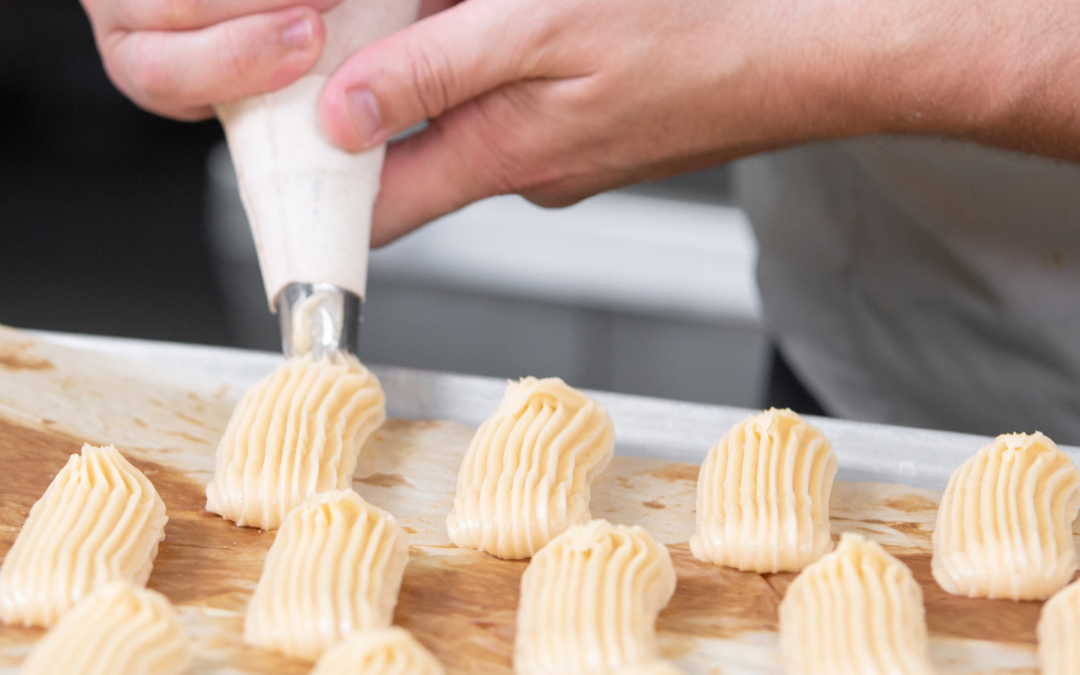Why Your Choux Isn’t Rising: 5 Common Mistakes and How to Fix Them
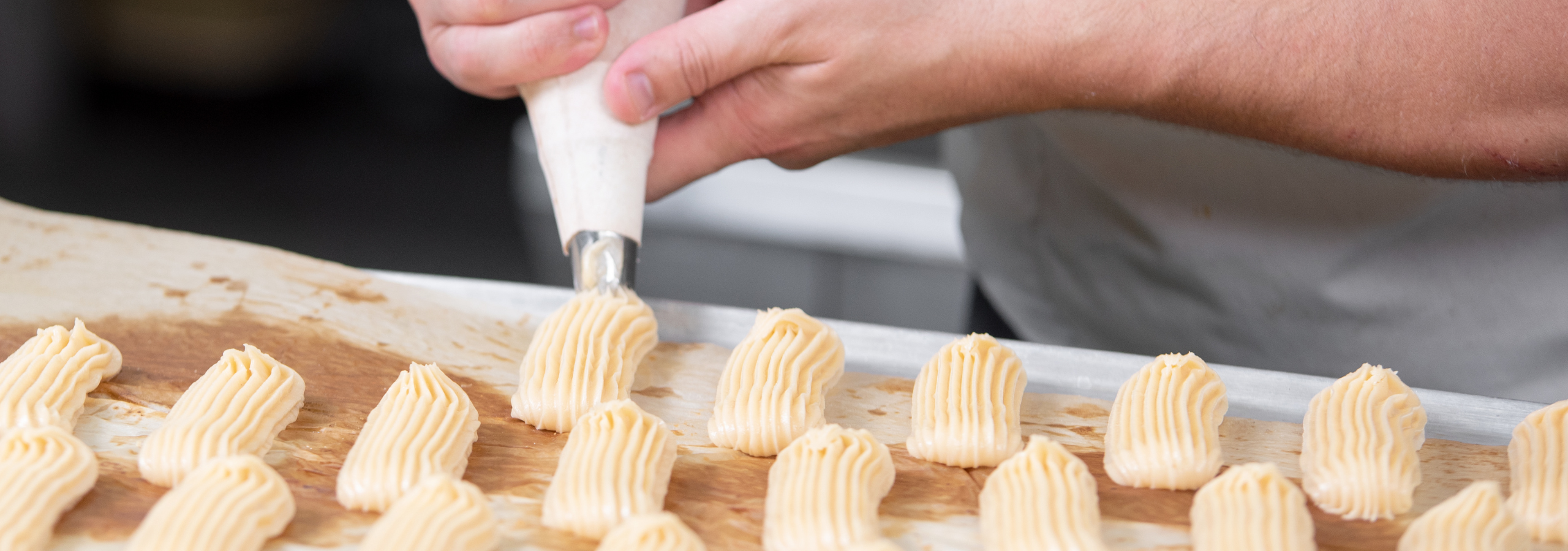
Choux pastry not rising? Here are the exact fixes that work in a basic home oven.
You followed the recipe, piped with care, and watched through the oven window—only to find your choux disappointingly flat. Sound familiar? Let’s fix that.
Baking choux pastry is often seen as something complex, reserved for professional bakers. But it doesn’t have to be.
Imagine a world where the only way to enjoy an éclair or cream puff is to book a flight to Paris. That makes no sense, right?
The truth is, without a solid recipe and the right baking tips, your efforts may end in disappointment—and a trip to the store instead of enjoying fresh pâte à choux from your own oven.
Let’s walk through the common choux pastry mistakes that may be holding you back—and how to go from flat, soggy shells to perfectly golden, crisp choux every time.
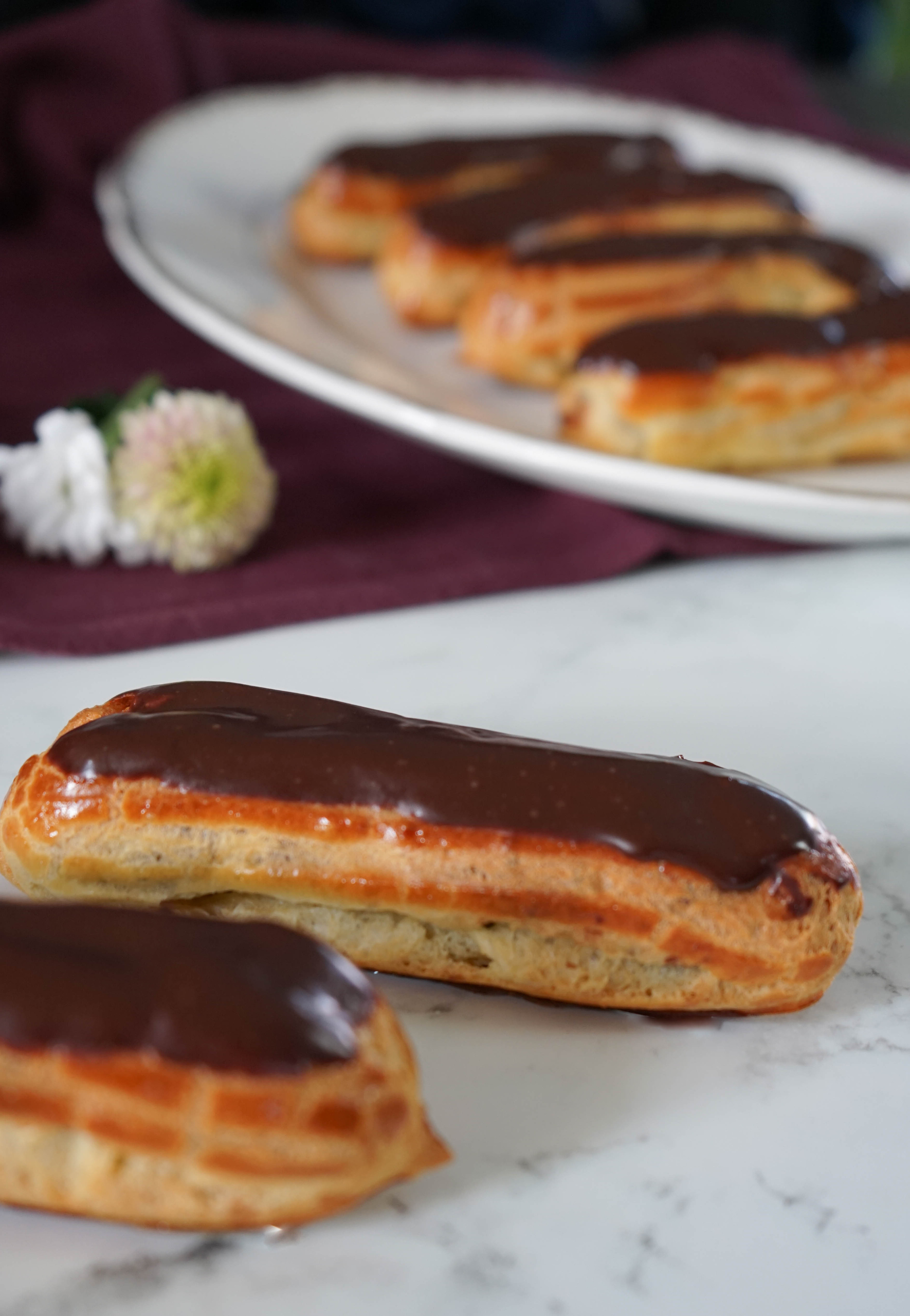
Understanding the Science Behind Choux Pastry
Pâte à choux is unique among pastries—it’s cooked twice. First, in a saucepan with butter, water, and flour (this is called a panade), and then baked in the oven with eggs added.
Why does this matter? The first stage allows excess moisture to evaporate, which sets the stage for the pastry to rise later. If this step is rushed, you may be setting yourself up for failure.
Let’s now explore why choux pastry doesn’t rise, and how to fix the issues for beautifully puffed results.
Mistake #1: The Dough Was Too Wet
Too much moisture in the dough is one of the top reasons your cream puffs didn’t rise.
What went wrong: You didn’t cook the panade long enough to evaporate excess moisture. Or, you added too much egg too quickly.
- Fix: Cook the flour-butter-water mixture (panade) until it pulls away cleanly from the sides of the pan and forms a thin skin at the bottom.
- Don’t rush the egg addition. Only add as much egg as the dough can hold—this depends on how well the panade was dried.
This is often why choux pastry is not rising: excess moisture prevents steam from building structure.
Mistake #2: Underbaking or Opening the Oven Too Early
Choux pastry relies on steam to puff up. If you release that steam too soon, your choux can collapse. On the other hand, if the steam stays trapped too long, they may be soft instead of crispy.
- Fix: Bake until golden brown and very firm to the touch. When you think they’re done, bake a little longer.
- For the last 5–10 minutes, wedge the oven door slightly open with a wooden spoon to let steam escape and help them dry out properly.
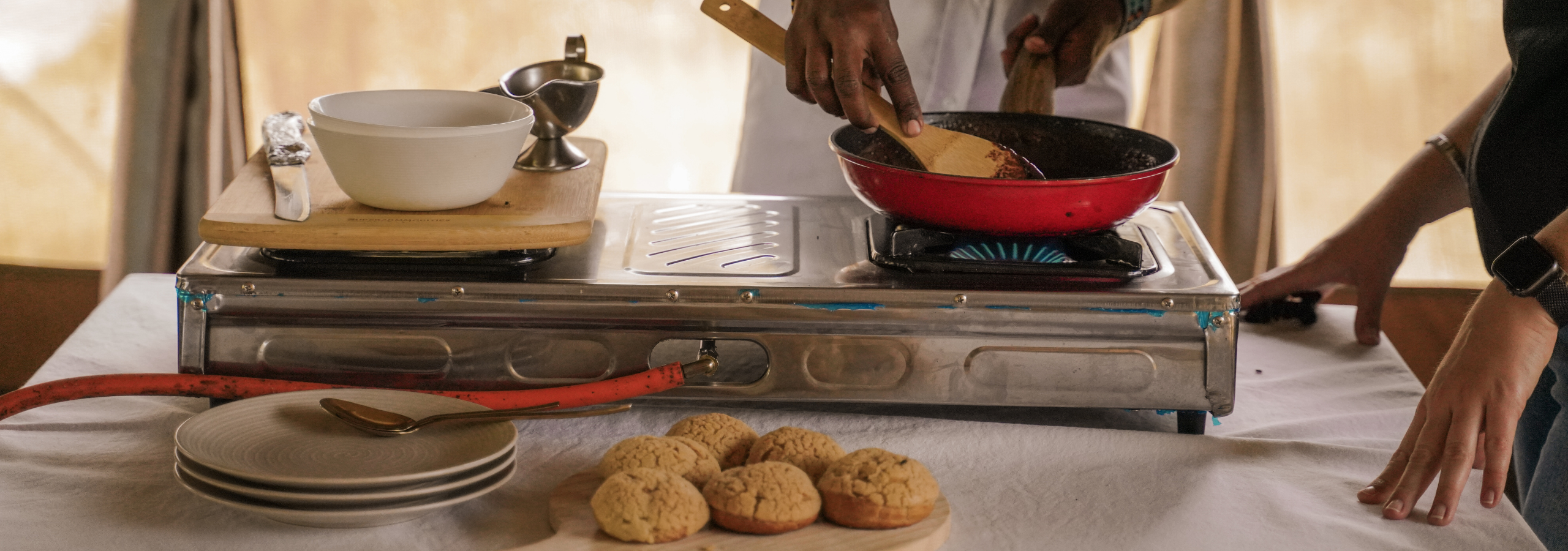
Mistake #3: Incorrect Oven Temperature
Why your cream puffs didn’t rise could come down to your oven’s actual temperature—not what the dial says.
- Too hot: The outside bakes too fast, forming a crust that prevents rising.
- Too cool: Not enough steam is generated for lift.
- Fix: Always preheat your oven, and invest in an oven thermometer to check for accuracy.
- Start baking at 200–210°C (392–410°F), then lower to 170°C (338°F) mid-bake to allow thorough drying.
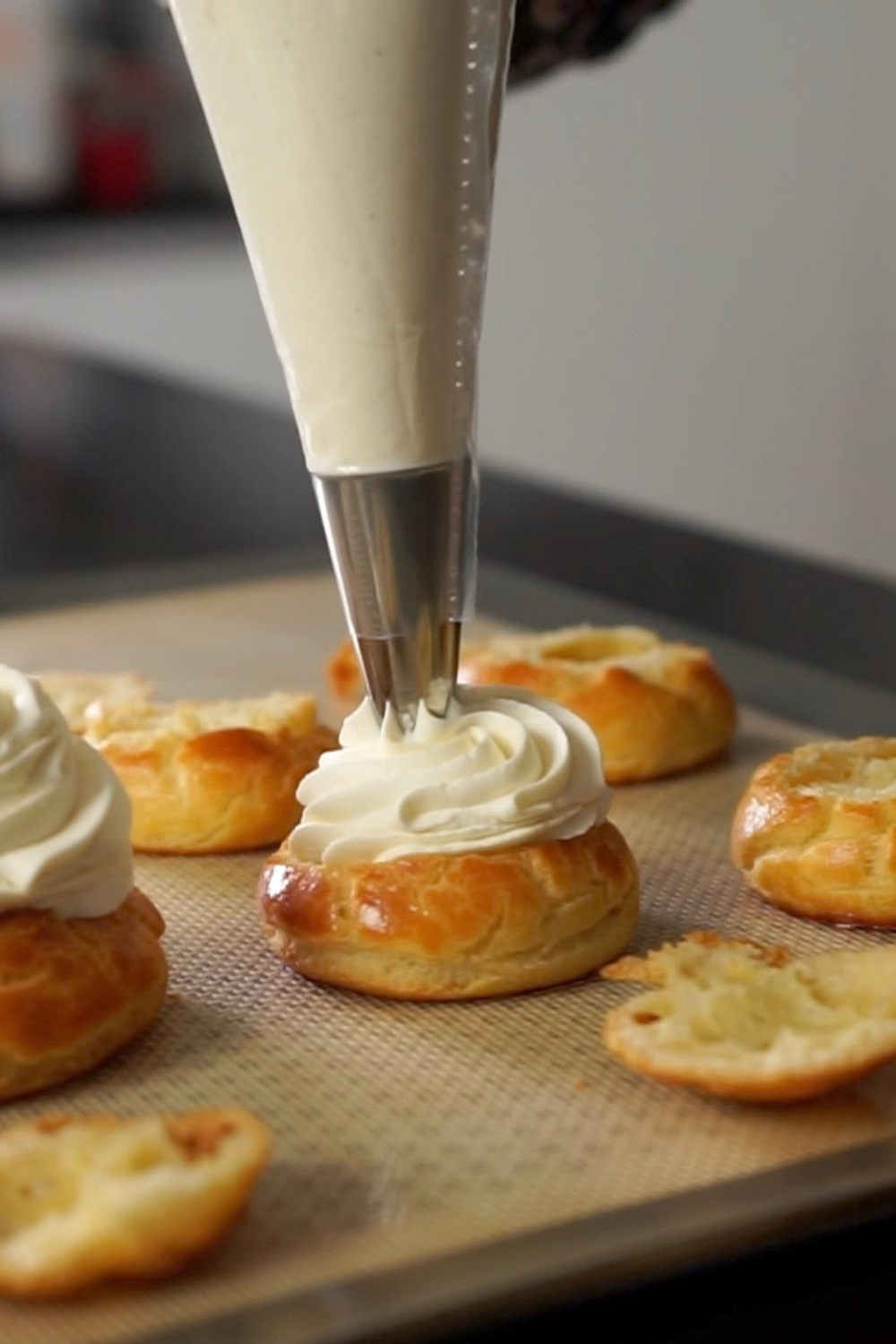
Mistake #4: Adding Too Much Egg (or Too Quickly)
The amount of egg you need can’t be fixed in a recipe—it depends on how much moisture was cooked out earlier.
Too much egg = runny batter that spreads instead of puffing.
- Fix: Add the eggs one at a time, and check the texture after each addition. Use the “V test”: when you lift the spatula, the dough should fall slowly in a ribbon.
- Whisk eggs together beforehand and add a little at a time until the right consistency is reached.
Mistake #5: Poor Piping Technique
Even perfect dough can lead to flat choux if piped poorly.
- Fix:
- Use a piping bag fitted with a round or star tip.
- Hold the bag vertically and apply gentle, even pressure.
- Pipe onto a lined baking tray, spacing them out in a staggered (quincunx) pattern to allow proper airflow.
- Flatten any peaks with a damp fork or brushed egg wash for a neat finish.
Pro Tip: Craquelin – Your Secret Weapon
Although mastering the choux pastry itself is essential, adding craquelin can help achieve evenly puffed, crisp choux with a stunning look.
Craquelin is a thin layer of sweet, buttery dough placed on top before baking—it melts and bakes into a crackly shell, enhancing both texture and appearance.
👉 Want to learn how to make craquelin step-by-step? Check out my dedicated blog post.
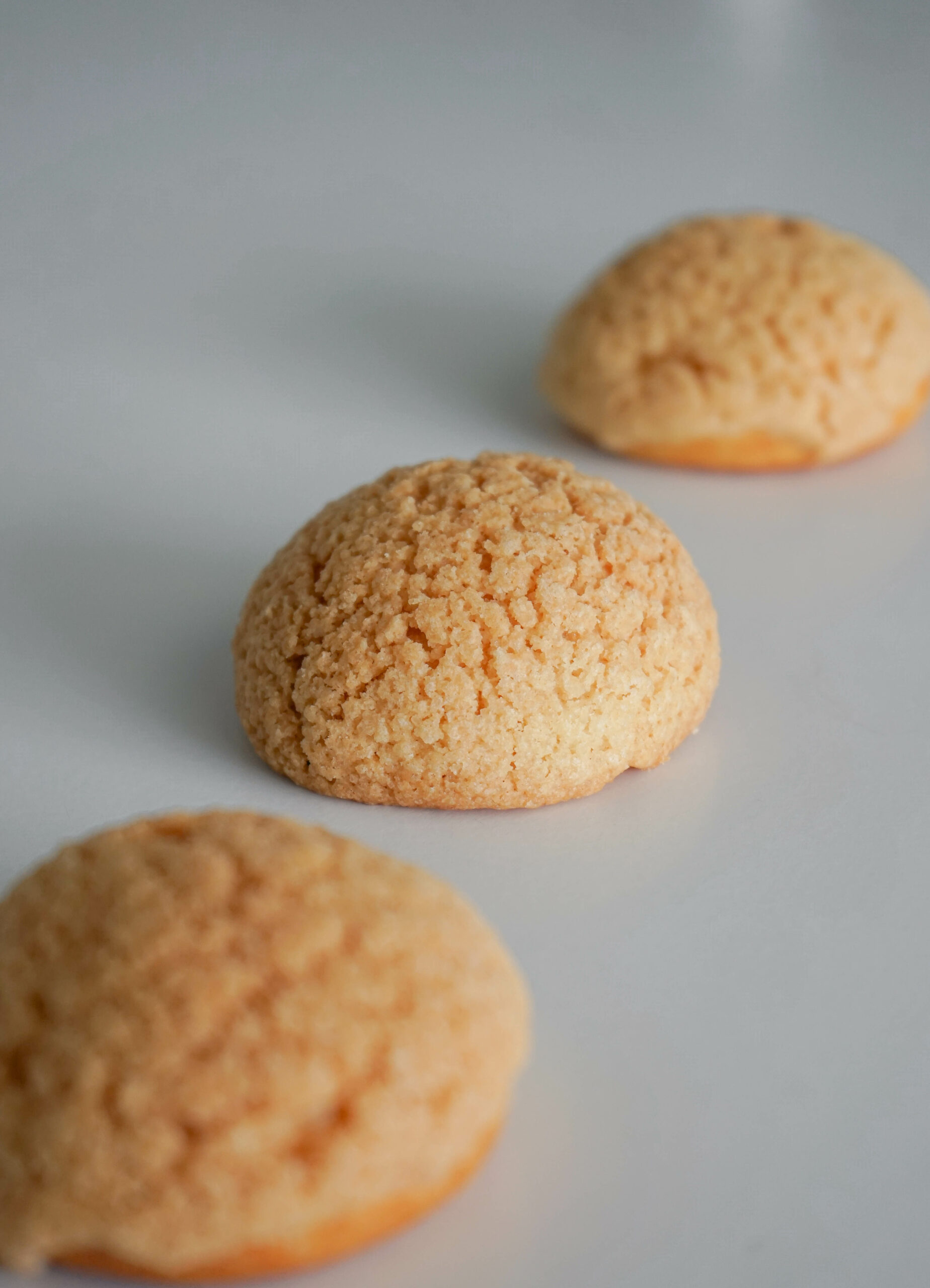
Conclusion
Now you know why choux pastry is not rising—and how to fix it every time.
Baking takes patience and repetition—every skilled baker started as a beginner.
Getting your choux pastry right isn’t about luck. It’s about understanding the process and applying the right tweaks. With a bit of practice, you’ll be baking perfect cream puffs that rise like magic.
Let me know how your next batch turns out—or reach out if you have questions!
Don’t let a flat choux deflate your confidence. You’ve got this. 💪
Looking to Improve your Sweet Offering with French Classics?
Check out my Pear Frangipane Tart recipe – a delicious French classic.
Learn to bake authentic éclairs and mini choux pastries with my online course.
Book a call with me to plan a customized pastry training for your team.
Let’s create unforgettable guest moments—one sweet bite at a time.


